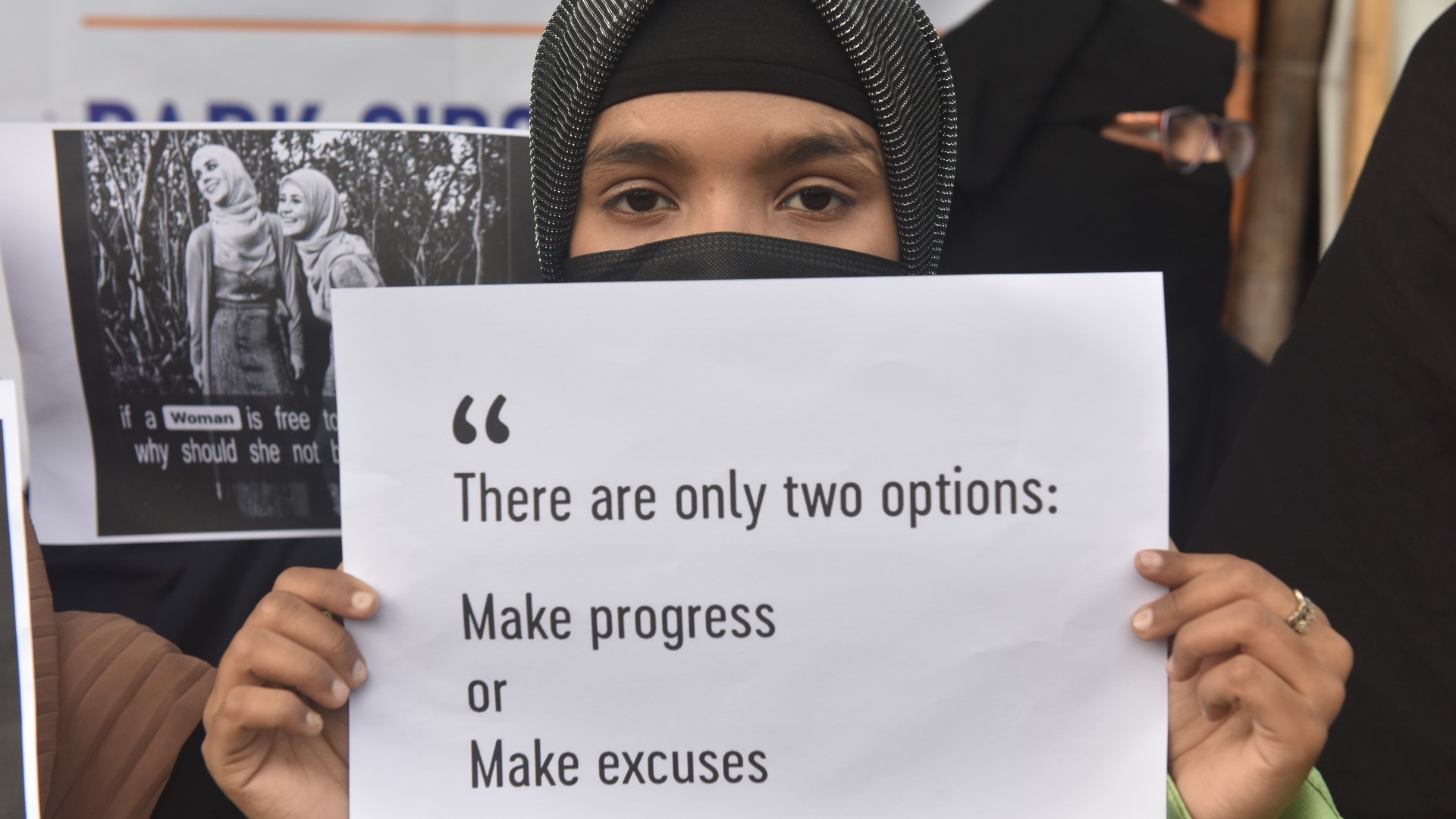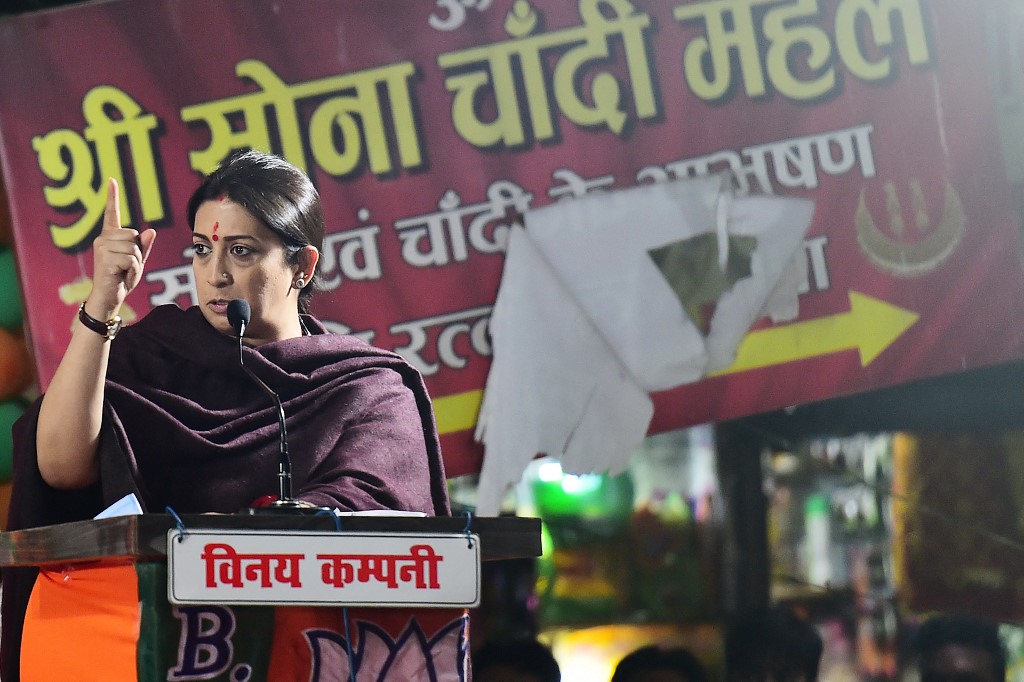India: Why Muslim women are at risk of losing it all

Amid the desk-thumping cheers of the lower house of the Indian parliament, detrimental decisions were rattled off as part of the 2023 budget process this month, marking yet another step towards disempowering Muslims in the country. This is the same house where the ruling right-wing government often fashions itself as the messiah of Muslim women, even as they endure a potentially devastating assault on their social, economic and political rights.
Amongst myriad cuts to budgets affecting minorities and women, the government has cut funding to help students from minority communities pass preliminary exams, while slashing the budget for madrassas.
From the right to choose what to wear, to the right to education and work, Indian Muslim women are at risk of losing it all
From the right to choose what to wear, to the right to education and work, Indian Muslim women are at risk of losing it all. Yet, despite this urgency, the public outcry is not nearly as pronounced as it should be.
Ongoing global debates around the right to education (in the context of Afghanistan) and the freedom to choose how to dress (in the context of Iran) have comfortably ignored Indian Muslim women - and this is hardly a new phenomenon.
Backlash against the Taliban, one would like to believe, stems from their clear negation of women’s rights. Yet, much of the international outcry actually stems from the legacy of US military intervention in Afghanistan and the Orientalist inclination to “save” Muslim women.
Stay informed with MEE's newsletters
Sign up to get the latest alerts, insights and analysis, starting with Turkey Unpacked
Along the same lines, the leader of India’s right-wing government, Prime Minister Narendra Modi, insists that he has “freed” Muslim women. But Muslim women - fearless and with their fists raised - would disagree.
Climate of intimidation
She stood alone, fearless and veiled head-to-toe, heckled by men in saffron scarves. This is how Muskan Khan, the “poster girl” for last year’s hijab-ban protests in the Indian state of Karnataka, subverted the stereotypical representation of a Muslim woman in the Indian imagination.
She was educated and indomitable, a subversion of the essentialised label of victimhood accorded to Indian Muslim women that is often incorrectly blamed exclusively on Muslim men. A year later, women like Muskan are facing the brunt of the Indian state’s harmful legislation, as well as a climate of violence and intimidation.
Minority Affairs Minister Smriti Irani was among many admirers of the newly released budget, which she praised for its focus on “inclusive development”. Ironically, the government has significantly slashed the budget of the ministry she heads - and the scale of these cuts is hard to ignore.
For minority educational empowerment, the budget allocation has been reduced from Rs 2,515 crores ($304m) to Rs 1,689 crores ($204.5m). The allocation for skills development and livelihoods was cut by 99 percent, while incentives for free coaching and other allied schemes were reduced by around 60 percent.
Indian Muslims have been fashioned within the Indian nation-state through a legacy and language of violence
This follows a trend that started last year. In December, the government discontinued the Maulana Azad National Fellowship, a scholarship for students from minority communities pursuing higher education. The fellowship was initially implemented more than a decade ago upon the recommendations of the Sachar committee, which highlighted the abysmal state of social, economic and educational conditions for Muslims in India.
Such steps are incongruous with government data. Indian Muslims continue to have relatively low access to education, particularly with regards to higher education, where enrolment numbers for Muslim students have been on the decline. Muslim students also tend to rely more on government institutions than non-Muslims. With little-to-no government support, students from Muslim communities will find it increasingly difficult to access education.
Interestingly, the enrolment of Muslim women in higher education has been growing in proportion to that of Muslim men. But this discouraging package of legislation is set to undo these strides, compounding the disadvantageous position that Muslim women in India occupy within the matrix of their religious, gender and class identities.
Wholesale assault
The ruling government insists that Muslim women “feel safe” under the BJP, and in justifying the hijab ban, it asserted that “misguided” Muslim women need to be brought into the “mainstream of education”.
If this is the case, why are Muslim women dropping out of colleges in Karnataka? A recent report by the Karnataka branch of the People’s Union for Civil Liberties found that more than 1,000 female Muslim students dropped out of schools in five districts during the hijab row.
The fallout of anti-Muslim legislation is not restricted to Muslims from economically underprivileged backgrounds; there is also an ongoing exodus of urban Muslims. Many young Muslims, especially women, are finding that safe public spaces are disappearing for them. Muslim women have been targeted through sexist mock “auctions”, while also facing significant hiring biases.
This wholesale assault is a recipe to intimidate and disempower Muslim women in India, buttressed by a culture of communalised rhetoric, in which convicted rapists are prematurely released and go on to receive a hero’s welcome. A language of intimidation, along with open calls for violence against Muslim women, are being normalised by mainstream news media, popular culture and vigilante internet trolls. Hate is being manufactured here.
The tepid reactions to this urgent crisis show that the foundations from which this project draws its strength are not new. Indian Muslims have been fashioned within the Indian nation-state through a legacy and language of violence, wherein Muslim women exist only as victims who need to be saved from violent Muslim men, or as sexualised objects on which wars of religious nationalism are to be played out.
Global discussions on women’s rights do not invite many allies for Muslim women in India.
In videos about the Karnataka hijab controversy, while Muslim teachers had to remove their veils before entering schools and Muslim students who refused to do so were sent home, the only woman allowed to exist on her own terms was a teacher imposing “discipline”. She wore a sari and a bindi - the only acceptable image of an “Indian” woman in the populist imagination.
The views expressed in this article belong to the author and do not necessarily reflect the editorial policy of Middle East Eye.
Middle East Eye delivers independent and unrivalled coverage and analysis of the Middle East, North Africa and beyond. To learn more about republishing this content and the associated fees, please fill out this form. More about MEE can be found here.







